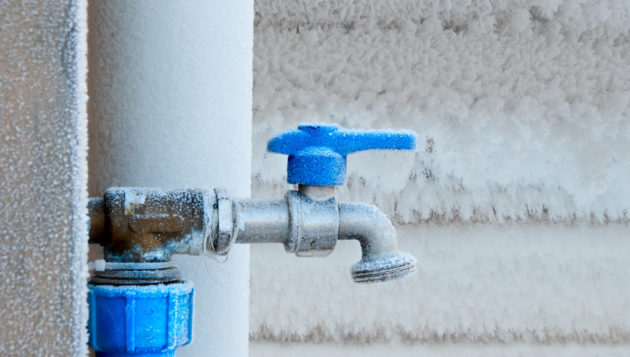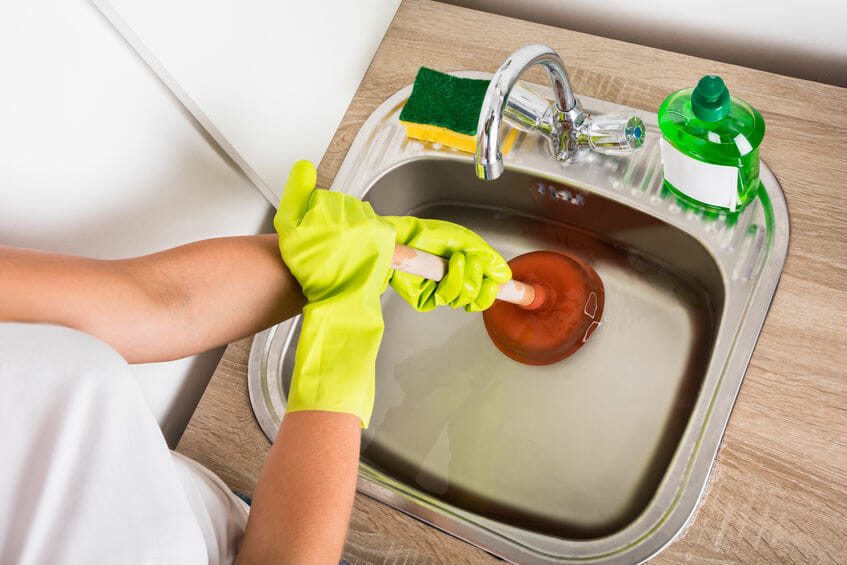Every person has got their own individual thinking with regards to Winterizing Your Pipes.

All house owners that reside in warm climates should do their best to winterize their pipelines. It is something you have to do throughout autumn before deep winter season genuinely begins. Failure to do so can lead to disaster like frozen, cracked, or ruptured pipelines. Right here are some useful winterizing hacks to keep your plumbing system secured even if the climate exterior is shocking.
Turn On the Faucets
When the temperature declines and also it appears as if the cold temperature will certainly last, it will assist to turn on your water both inside and outdoors. This will maintain the water streaming via your plumbing systems. You'll end up throwing away gallons of water this way.
Open Up Closet Doors Hiding Plumbing
When it's chilly outside, it would certainly be valuable to open up closet doors that are camouflaging your pipes. They could be somewhere in your kitchen or restroom. This will allow the warm air from your heater to flow there. Therefore, you protect against these subjected pipelines from cold. Doing this tiny trick can keep your pipelines cozy as well as limit the potentially dangerous outcomes of freezing temperatures.
Take Some Time to Cover Exposed Pipeline
One easy and clever hack to heat up frigid pipes is to wrap them with warm towels. You can cover them initially with towels. After safeguarding them in position, you can put boiling water on the towels. Do it gradually to allow the towels absorb the liquid. You can also utilize pre-soaked towels in hot water, just don't forget to wear protective handwear covers to safeguard your hands from the warmth.
Try a Hair Clothes Dryer or Warm Gun
When your pipes are virtually freezing, your reliable hair dryer or warmth gun is a godsend. If the warm towels do not help displace any type of clearing up ice in your pipes, bowling hot air straight right into them may aid. You may finish up destructive your pipes while attempting to melt the ice.
When Pipes are Frozen, close Off Water
If you see that your pipelines are totally frozen or almost nearing that phase, turn off the primary water shutoff promptly. You will usually locate this in your cellar or utility room near the heating unit or the front wall closest to the street. Transform it off right now to prevent more damages.
With more water, even more ice will load up, which will ultimately lead to burst pipes. If you are not sure about the state of your pipes this winter months, it is best to call an expert plumber for an examination.
All homeowners that live in pleasant climates must do their ideal to winterize their pipelines. Failing to do so can mean catastrophe like icy, fractured, or burst pipes. If the warm towels do not assist dislodge any kind of resolving ice in your pipes, bowling warm air directly right into them may aid. Transform off the main water shutoff promptly if you discover that your pipelines are entirely frozen or nearly nearing that stage. With more water, even more ice will certainly pile up, which will ultimately lead to rupture pipelines.
PREVENT YOUR PIPES FROM FREEZING THIS WINTER
A Leading Cause of Property Damage
When the weather is taking a deep nose dive into the cold dreary days, the risk of your pipes freezing and potentially bursting skyrockets. Unfortunately, during these cold dreary months, burst pipes are the most common denominator for property damage. The pipes that are most at the risk are those that are in areas where it is most cold in your home. For instance, pipes located in interior places such as basements, attics, and your garage. Unfortunately, that doesn’t mean that the pipes running through your cabinets or exterior walls can’t freeze. Good news, however, is that you can do things to help prevent pipes from freezing.
How to Prevent Pipes From Freezing
Once the temperature starts to drop during the winter, you should be taking the proper measures needed to ensure that your pipes stay warm and that there is circulation of water through them. Some steps that experts may recommend could go against your better judgement when it comes to saving water and heat. However, it would go without saying that when expenses are compared, damaged pipes could put a bigger dent in your wallet than a water bill.
What Can I Do?
- Keep your garage door closed. This is very important, especially if you have water supply lines running through your garage.
- Open your kitchen and bathroom cabinets to allow warm air to circulate through them.
- Allow air circulation throughout your home. Keeping the interior doors open will once again allow the warm air to circulate inside your home.
- Ensure your thermostat is running the same temperature throughout the night and day.
- If you plan to be away from home during the cold months, set your temperature no lower than 55° F. This should provide enough heat to keep the pipes warm and prevent any remaining water inside the pipes from freezing.
- For more of a long-term solution, add insulation to attics, basement, and other crawl spaces around your home.
- By allowing your faucet to drip, it will alleviate pressure in the system. This is important because the pressure that is created between the blockage and the faucet can potentially cause the pipes to burst. Allowing the faucet to drip will prevent the pressure from building up, therefore keeping the pipes from bursting.
- Seal any cracks, openings, and crawl spaces around your home to prevent cold air from coming inside. This keeps your pipes-not to mention your home-warmer and less susceptible to issues caused by freezing temperatures.
- For the pipes in your home that are easily accessible, applying electrical tape to them might prevent them from freezing over. This is a quick fix, as you can apply the tape directly to the pipe. There are two options for heating tapes. One turns on and off by itself when it senses heat is needed. The other type of heating tape needs to be applied when heat is needed and removed when not necessary. If you have exposed pipes in your home, you can check this website to take a look at a few options that would be available at a shop near you.

As an avid reader about How to stop pipes from freezing during the winter, I thought sharing that excerpt was sensible. So long as you liked our post if you please make sure you remember to share it. Thank you for your time invested reading it.
Best solutions here.
Comments on “Intelligent Winterizing Solutions: 5 Techniques to Defend Against Pipe Bursts”